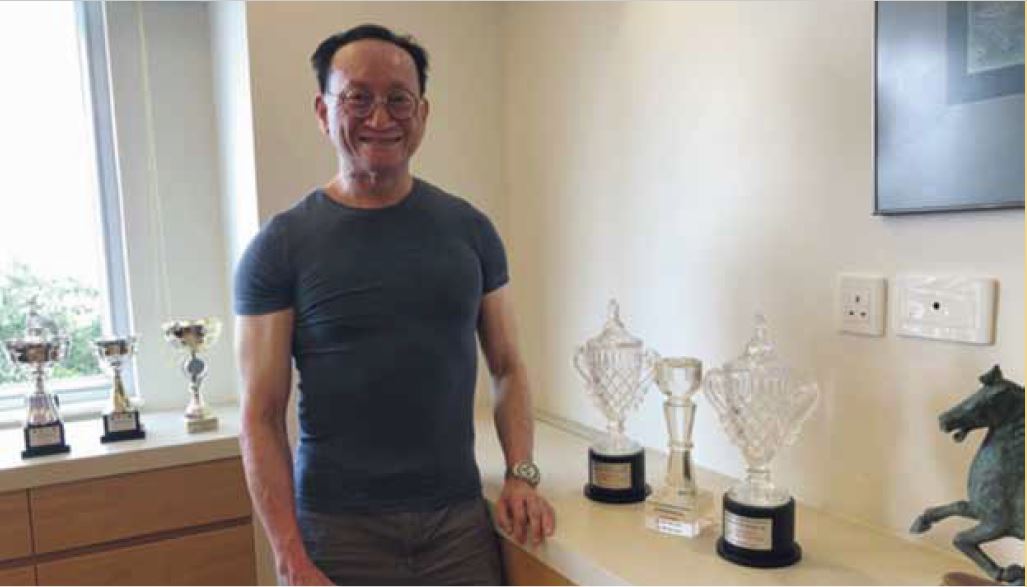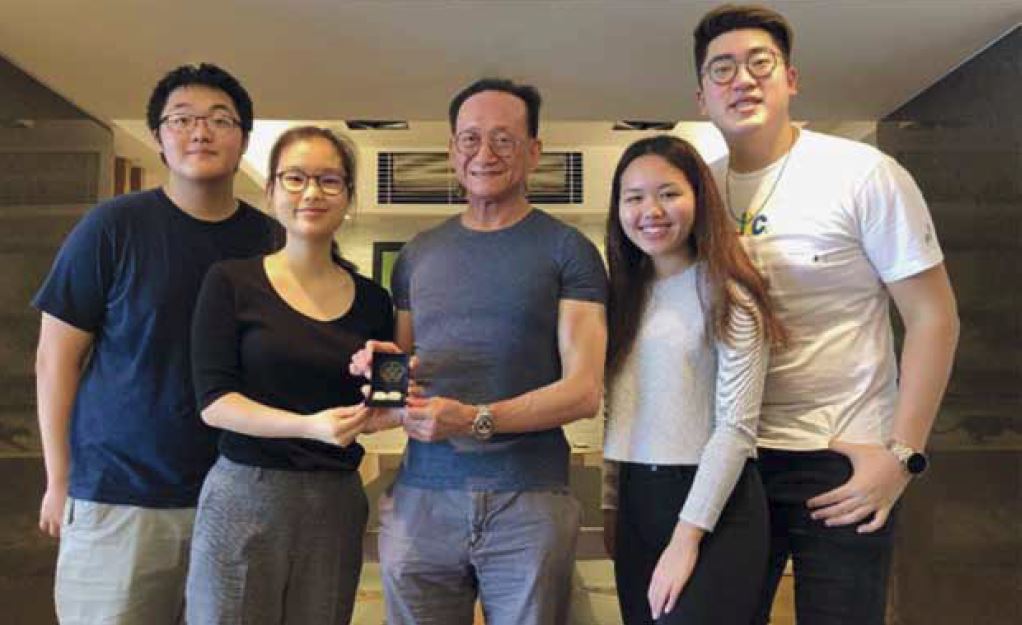© Hong Kong Academy of Medicine. CC BY-NC-ND 4.0
HEALTHCARE FOR SOCIETY
Clinician and teacher, sportsman and coach: an
interview with Dr Henry Lam
Bianca Chan1; Henry Evan Cheng2;
Man-tsin Lo2; Nathan So2
1 Year 3 (MB ChB), The Chinese
University of Hong Kong
2 Year 1 (MB ChB), The Chinese
University of Hong Kong
When we interviewed Dr Henry Lam, he had just
returned from Thailand where he had competed in a bridge tournament. Dr
Lam is known among medical professionals for pioneering the breast
screening service at the Well Women Clinic in 1990 and serving as College
Warden from 2008 to 2016. But, as if his stellar medical credentials were
not impressive enough, Dr Lam was also the team official for the Hong Kong
bridge team at the Asian Games in 2018 which brought back two silver and
two bronze medals. “My annual leave is mainly spent on sports training,
academic conferences, and clinical teaching,” he explained, as we wondered
how he manages to juggle his roles as a radiology consultant at Kwong Wah
Hospital, Hong Kong, a trainer in radiology, and an avid athlete.
Dr Lam’s love for bridge began long before his love
for medicine when, at age 10, his elder brother taught him how to play. He
went on to join the bridge team at his high school, where he learned to
perfect the game and won Inter Secondary School Championship
at age of 19. Despite his hectic work schedule as a medical student at the
University of Hong Kong, Dr Lam became a dedicated member of the Hong Kong
Contract Bridge Association. After graduating, Dr Lam did not give up his
passion for bridge, despite the frenetic pace of life as a doctor, and
travelled the world representing Hong Kong in multiple regional and
international competitions. He attained the grandmaster grade in Bridge
after becoming Hong Kong Open Champion in 2010 and 2011. His World Ranking
is currently 181 in the senior series.
Although Dr Lam has won a plethora of tournaments
and competitions throughout his bridge career, he spoke fondly about
winning the 18th Asian Games in 2018. “It was definitely the most
memorable moment in my journey,” he said as he proudly showed off his
collection of trophies. As the Hong Kong team official, Dr Lam was
responsible for training and improving the team, helping them to identify
their strengths and weaknesses, and boosting team morale. He explained to
us that bridge is like a “mind marathon”, requiring immense focus and
attentiveness for many hours. As a result, he had to ensure that the team
were in a level-headed mental state throughout the marathon. His
dedication to the team and their hard work ultimately led to the success
of the Hong Kong team in the event.
Dr Lam is most proud of his personal achievement in
winning the Hong Kong Medical Association’s Sportsman of the Year award 3
years in a row. Throughout his life and medical career, Dr Lam understood
the importance of a healthy work-life balance: “Time is not a problem; the
problem is how to allocate your time,” he opines. Growing up, Dr Lam
enjoyed playing various sports, from badminton and table tennis to sailing
and windsurfing. Even as a practising physician, Dr Lam continues to
dedicate time to exercising every day, reserving his Mondays and Sundays
especially for his childhood favourites, table-tennis and badminton.
Physical fitness was not the only reward that Dr
Lam earned from sports. Dr Lam appreciates the importance of transferable
skills, and he has learned techniques from sports and other professions or
specialties that have helped him in his medical career; such as adopting a
surgeon’s practice of chatting to a patient while allowing local
anaesthesia to take effect, which could also help to calm a patient
undergoing radiological procedures.
Dr Lam says that the mental discipline needed for
sports and professions stems from a conscious-subconscious distinction.
His experience with sports showed him that a good foundation of basic
skills is earned through good practice, so that these become subconscious
and habitual, leaving more conscious brainpower to devote to the game at
hand. Dr Lam finds this process of learning and developing subconscious
skills to be directly applicable to the workplace. Once basic skills have
become routine and part of the subconscious, one can use logical deduction
for more complicated investigations and analysis of the clinical
information available. The parallels between training for bridge and
practising medicine allowed Dr Lam to hone his skills in both at the same
time.
Dr Lam has also had a remarkable medical career.
When decided to specialise in radiology, it was still a rather undeveloped
specialty in Hong Kong. Doctors had only plain film imaging and
fluoroscopy. Surgeons had little information prior to operating, unlike
today, where various imaging modalities and other information allow for
much more precise planning of operations. Dr Lam identified a need for
development in the Radiology Department at Kwong Wah Hospital, as well as
in neuroradiology and breast-focused medicine subspecialties. He saw Kwong
Wah Hospital as the perfect opportunity to develop his pilot project, the
Well Women Clinic, which provides breast and cervical cancer screening
services for women. Despite the number of cancers detected by screening,
Dr Lam remarked that the high opportunity cost associated with population
breast screening hinders it being adopted as a Government Policy.
Owing to his expertise in radiology, Dr Lam was the
Examiner for the Joint Fellowship Examination of the Hong Kong College of
Radiologists (HKCR) and Royal College of Radiologists and represented the
HKCR in the Macao Consultant Examinations. He was also the External
Examiner of the Final Master of Medicine (Diagnostic Radiology)
Examination in Singapore. Dr Lam was also instrumental in establishing a
structured radiology training rotation in the early 1990s, and he
continues to teach trainees annually to prepare for fellowship exams. As
Dr Lam prepares for retirement, he has meticulously annotated and
organised his previous work to pass down a treasure trove of knowledge to
future radiologists.
Although Dr Lam will be taking off his white coat
soon, he has no plans to put down his badminton and table-tennis racquet:
“it’s less about longevity than active life expectancy, for which I have
plans to extend as long as possible.” Before we bid our farewells, Dr Lam
showed us one of his latest hobbies—Chinese calligraphy. He wrote the
Chinese character for “to be still like water”, perhaps alluding to the
fluidity of his life as both a clinician and teacher, and as a sportsman
and coach.



